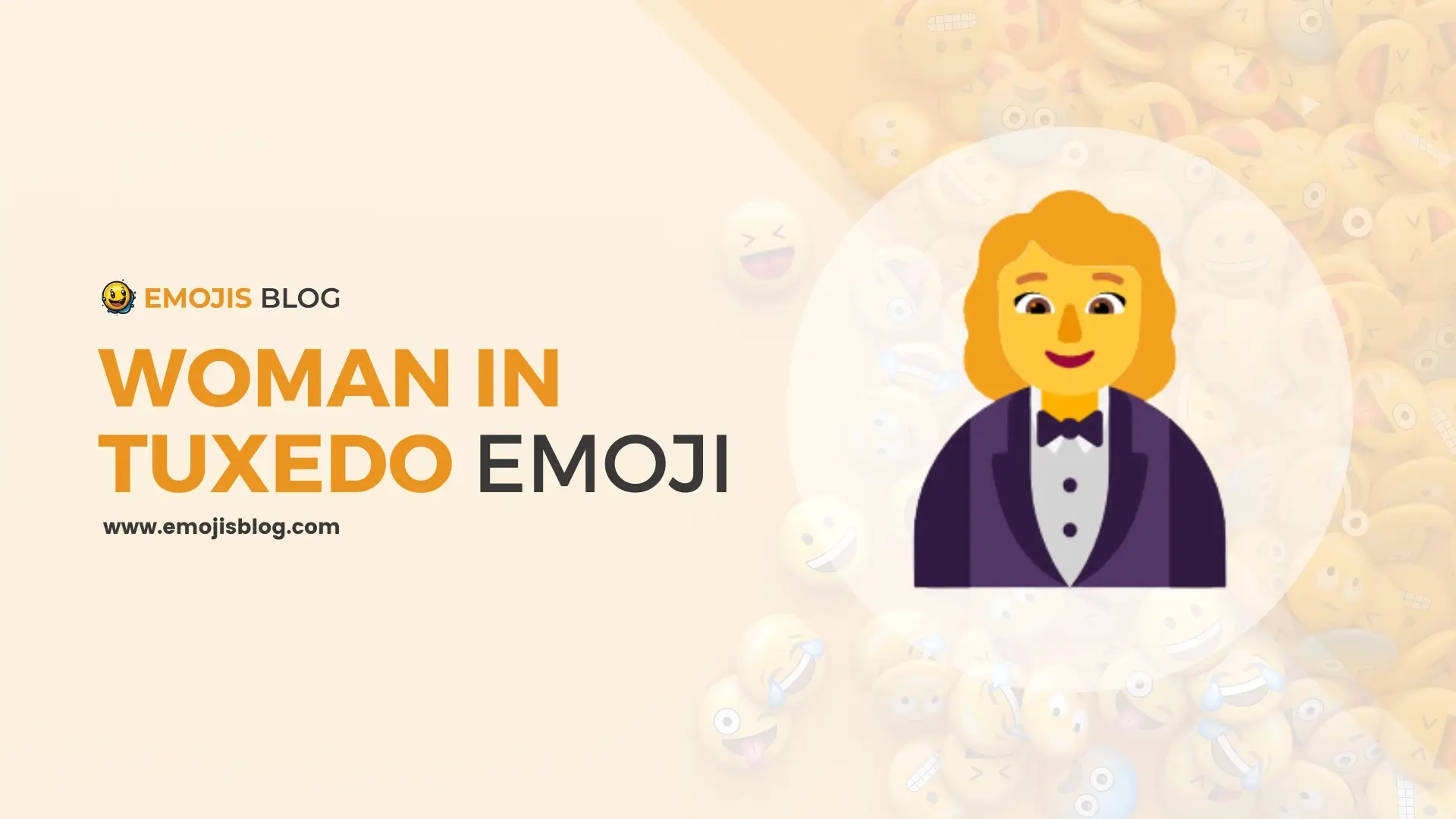What Does The Woman In Tuxedo Emoji Mean 🤵♀️
🤵♀️
Woman In Tuxedo Emoji Meanings 🤵♀️
The woman in tuxedo emoji (🤵♀️) represents a woman dressed in a formal tuxedo, a type of attire traditionally associated with men. Introduced in 2020 as part of the Unicode 13.0 update, this emoji reflects a shift towards greater gender inclusivity and diversity in digital communication. It symbolizes the breaking of traditional gender norms and is often used to represent women who prefer formal masculine attire, as well as to celebrate individuality, gender fluidity, and support for the LGBTQ+ community. This emoji is commonly used in contexts related to formal events, personal expression, and the promotion of gender equality.
Technical Information
| Attribute | Description |
|---|---|
| Unicode Name | WOMAN IN TUXEDO |
| Codepoint | U+1F935 U+200D U+2640 U+FE0F |
| Introduced in Unicode | Unicode 13.0 (2020) |
| Emoji Version | Emoji 13.0 |
| Shortcodes | :woman_in_tuxedo: |
| Category | People & Body |
| Presentation | Text (U+1F935 U+200D U+2640 U+FE0F) or Emoji (U+1F935 U+200D U+2640) |
| Combining Sequence | 🤵♀️: MAN IN TUXEDO (U+1F935) + Zero Width Joiner (U+200D) + FEMALE SIGN (U+2640) + Variation Selector-16 (U+FE0F) |
| Common Platforms | Apple, Google, Microsoft, Samsung, Twitter, Facebook, WhatsApp |
| Display Variations | Different platforms may display the emoji with variations in the woman’s appearance, tuxedo style, and colors used, but the core elements of a woman in a tuxedo are consistent. |
Introduction to the Woman in Tuxedo Emoji 🤵♀️
The woman in tuxedo emoji, represented as 🤵♀️, is a relatively new addition to the emoji family. This emoji was introduced to provide more diversity and inclusivity in digital communication, reflecting the changing social norms and gender roles. It portrays a woman dressed in a tuxedo, a type of formal wear traditionally associated with men. This emoji has various implications and uses, which we will explore in this article.
History and Evolution of the Woman in Tuxedo Emoji
The Introduction of Gender-Inclusive Emojis
Emojis have evolved significantly since their inception in the late 1990s. Initially, they were simple, colorful icons representing emotions, objects, and basic activities. However, as the use of emojis became widespread, the need for more inclusive and diverse representations grew. In response, Unicode Consortium, the organization responsible for standardizing emojis, began to introduce emojis that better represented different genders, races, and cultural backgrounds.
The Birth of the Woman in Tuxedo Emoji
The woman in tuxedo emoji was officially added to the Unicode Standard in 2020 with the release of Emoji 13.0. This update was part of a broader effort to introduce more gender-inclusive emojis. Prior to this, the man in tuxedo emoji (🤵) had existed, and the introduction of the woman in tuxedo emoji provided a counterpart that acknowledges women who choose to wear formal attire typically associated with men.
Visual Representation and Design
Characteristics of the Woman in Tuxedo Emoji
The woman in tuxedo emoji depicts a woman wearing a black tuxedo jacket, white dress shirt, and a black bow tie. The design may vary slightly across different platforms and devices, but the core elements remain the same. The emoji’s hairstyle and facial features are typically designed to be feminine, distinguishing it from the man in tuxedo emoji.
Variations Across Platforms
Different platforms, including Apple, Google, Microsoft, and Samsung, have their own unique designs for the woman in tuxedo emoji. While the general concept remains consistent, each platform may interpret the emoji’s appearance slightly differently, reflecting their own design philosophies and visual styles.
Symbolism and Cultural Significance
Breaking Gender Norms
The woman in tuxedo emoji is a powerful symbol of breaking traditional gender norms. It represents women who choose to dress in traditionally masculine attire, challenging societal expectations and promoting gender equality. This emoji celebrates individuality and the freedom to express oneself regardless of gender.
Representation of LGBTQ+ Community
The woman in tuxedo emoji also holds significance within the LGBTQ+ community. It can be used to represent lesbians, bisexual women, and other LGBTQ+ individuals who embrace non-traditional gender roles and fashion choices. The emoji is often used in contexts related to LGBTQ+ pride, gender diversity, and inclusivity.
Uses and Contexts
Celebrations and Formal Events
The woman in tuxedo emoji is commonly used in messages related to formal events and celebrations. Whether it’s a wedding, gala, or any other event requiring formal attire, this emoji can be used to convey elegance and sophistication. It is often paired with other emojis representing formal wear, such as the woman in gown emoji (👰♀️) or the man in tuxedo emoji (🤵).
Personal Identity and Expression
Many individuals use the woman in tuxedo emoji to express their personal identity and style. For women who prefer wearing tuxedos or suits, this emoji is a way to represent themselves accurately in digital communication. It can also be used to make statements about gender fluidity and the rejection of traditional gender roles.
Conclusion
The woman in tuxedo emoji, 🤵♀️, is more than just a simple icon in digital communication. It represents a step towards greater inclusivity and diversity, reflecting the evolving social norms and the increasing acceptance of non-traditional gender roles. Whether used to celebrate formal events, express personal identity, or support the LGBTQ+ community, this emoji carries a powerful message of equality and individuality. As society continues to progress, the introduction and use of such inclusive emojis play a vital role in promoting acceptance and understanding in our digital interactions.

